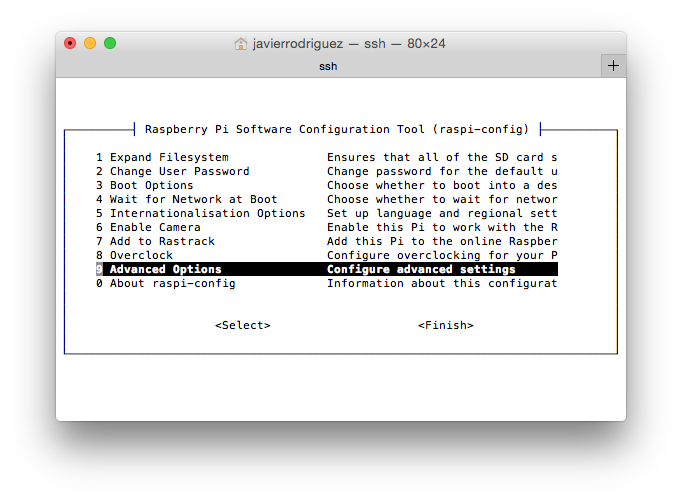Sooner or later your app will need to work with files, maybe to save the data generated with the app itself, to open the files created with other apps or because is the main purpose of the utility you are working on. Xojo gives you the class FolderItem fully loaded with a useful bunch of properties that allow you to examine the attributes of any file; for example, the creation or modification of dates, the file path (in several formats), if the file is an alias, etc. The FolderItem class also gives you the methods to do a lot of file operations without effort.
Comments closed72 search results for "javier"
Xojo is a modern, powerful programming language with an IDE that simplifies all kind of tasks related your project creation and deployment. One such helpful feature is the UI layout design; you can find it under the Library Panel, it’s a meaningful collection of graphic classes (Controls) ready to use in our apps. Probably one of the first and most used controls in apps design is the TextField, TextField simplifies the way an app can get the input from the user. Let’s see its main properties and how this control behaves when used in Desktop, Web (WebTextField) and iOS (iOSTextField) apps!
You can watch the video (in Spanish, with English subtitles) as you read and work through this post.
Comments closedYou already know, you can use Xojo to create practically any kind of application; from apps used by corporations, Universities and even Government agencies around the world, to apps used by photographers, designers and, of course, developers; and even those small utilities that makes our lives a bit easier.
In fact, a lot of these little utilities are what are known as Wrappers. That is, a nice user interface that simplifies and makes more user friendly a feature that is already available in the native operating system; often, in the form of one or more combined commands that need to be typed from the Command Line prompt.
You can watch the video (in Spanish, with English subtitles) as you read and work through this example.
Comments closedXojo is a superb choice for developing and deploying apps for Raspberry Pi. After all, Xojo not only simplifies making the User Interface of your apps via drag and drop, it’s an object-oriented and event oriented programming language that builds native Linux apps based on the ARM processor architecture for the Raspberry Pi (among other platforms).
Comments closedIn previous blog entries we saw how easy it is to implement the Design Pattern Singleton and how we can find the Observer Design Pattern already implemented on several Xojo features by default, greatly simplifying our code and interaction between the objects. Now, as promised, it is time to put it all in practice, creating our own Notification Center: a class that will allow us to share the same unique instance for the entire App (Singleton), and that can use any object in order to register itself for receiving notifications by the observed Control, for one or more message (the notifications themselves).
Comments closedWith Xojo 2016r2 and later your iOS apps can access and use a new feature: iOS Location. This is a BIG feature to help you determine where in the world the device running your app is located and so you can react to its location. And you know what is even better? Implementing this feature is no-brainer.
Comments closedIn this Xojo tutorial we will see how simple it is to make an iOS App that shortens an entered URL using the public API of Bit.ly. We will use our own subclass inherited from Xojo.Net.HTTPSocket, and the Declare statement in order to use some functions and methods found on the native Cocoa Touch API. In fact, the use of Declare is mandatory because with the new Xojo Framewok we don’t yet have access to the EncodeURLComponent function available with the old framework. This one is a big help in substituting any ilegal character with his hexadecimal value for the final URL’s composition.
Comments closedIn a previous post we saw how to implement the Singleton Design Pattern in our Xojo apps. Now, it is time to look at another useful Design Pattern you can use in your apps: the Observer Design Pattern. This one solves the kind of question “How can the ‘x’ controls be automatically notified every time there are changes on ‘y’?” Sound interesting? Let’s see how!
In fact, this is the first of a two part series regarding the Observer Design Pattern. This one will focus on how easy is to implement using the interfaces already available in Xojo for UI controls like the PushButton, the BevelButton, and also for the Timer class. In Part 2, we will see how to implement the Observer Design Pattern from scratch, using our own Classes and Interfaces, so it will be easier to understand the mechanisms behind this Pattern and how to use it.
Comments closedOne of the best things that Xojo offers to programming newcomers is that they can simply jump-in and start to write code. In a matter of a few hours they’ll have a functional app! Nothing new here. (Or for not-so-newcomers, a fast way of creating a functional prototype from a idea).
But as these users advance in their Xojo skills, they probably will care about coding better and to embrace the OOP way of doing things. After all, Xojo is a modern programming language with Classes, Inheritance, Interfaces and a bunch of the usual OOP paradigms that have much to offer: reusability, better maintainability and a lot of flexibility.
Some years ago, Xojo introduced the ability to use Computed Properties, something that is present in other programming languages too and is based on the use of dedicated methods to assign and retrieve the property value itself. So, in other programming languages, the first of these dedicated methods (or functions), the Setter, is the one invoked every time we want to modify the value of the associated property, while the Getter method is the one used from our code to retrieve the associated value. The Object-Oriented Programming (OOP) concept found behind this feature is Method Overloading. Nevertheless, let’s make clear that Xojo Computed Properties are not methods. They aren’t! But they make our life as developers much easier compared with regular Properties.
Comments closedCan't find what you're looking for? Try refining your search:



